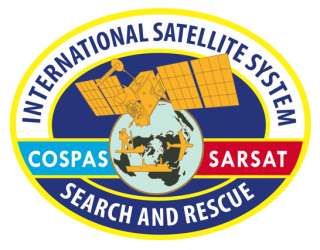The International Cospas-Sarsat Programme was established under the International Cospas-Sarsat Programme Agreement signed in Paris on 1 July 1988 by Canada France, the USSR (since replaced by the Russian Federation) and the United States of America. This Agreement provides for the association of non-Party States with the Programme.
43 nations and organizations are currently associated with Cospas-Sarsat. If a country is not formally associated as a Participant in Cospas-Sarsat, a Search and Rescue Point of Contact (SPOC) in that country is supported by a Cospas-Sarsat Mission Control Centre (MCC). The list of SPOCs and associated supporting MCCs is available in the “Contact Lists” section of our Professonial website. This means that 406 MHz distress alerts detected anywhere in the world are routed through the Cospas-Sarsat MCC network to the appropriate search and rescue authorities.
To achieve maximum benefit from the Cospas-Sarsat System, all countries should establish:
- reliable communication links with the supporting MCC, including providing the full address/email/telephone/fax contact information for the Search and Rescue Point of Contact (SPOC),
- appropriate regulations for the use of 406 MHz beacons within the country, and
- a beacon register with a 24-hour point of contact for ELTs, EPIRBs and PLBs, or authorizing use of the International Beacon Registration Database (IBRD, available at www.406registration.com).
Alternatively, a country may wish to establish itself as a Cospas-Sarsat Ground Segment Provider and receive and process alert data directly from the Cospas-Sarsat satellites. To accomplish this, a ground receiving station (LUT) and Mission Control Centre (MCC) may be purchased and installed. The Cospas-Sarsat Secretariat itself does not operate, procure or sell any equipment.
A government representative may obtain information on LUT and MCC installation and associated costs directly from the manufacturers of Cospas-Sarsat Ground Segment equipment. Because of the high level of investment required to develop and produce the Cospas-Sarsat LUTs/MCCs, only a limited number of manufacturers have produced, sold and installed equipment that has been commissioned into the Cospas-Sarsat Ground Segment. The list of manufacturers of ground segment equipment that has been commissioned into the Cospas-Sarsat system can be found in the “Contact Lists” section of our Professional website. The Secretariat cannot provide information on costs or performance of equipment.
A third option would be for a country to formally associate with Cospas-Sarsat as a User State. The International Cospas-Sarsat Programme Agreement provides for the association with Cospas-Sarsat of States that did not sign the original 1988 Agreement. Such association is welcomed by the Cospas-Sarsat Parties and is considered mutually beneficial. A User State is not required to purchase and operate ground station equipment (406 MHz distress alerts would continue to be delivered via the supporting MCC), but can attend Cospas-Sarsat Meetings and participate in the management of the Cospas-Sarsat System. Procedures for the notification of non-party states’ association with the International Cospas-Sarsat Programme are detailed in document C/S P.002.
General guidelines for participating in the Cospas-Sarsat System are provided in document C/S P.007. The association of a State with the International Cospas-Sarsat Programme as a Ground Segment Provider or as a User State is accomplished via a formal procedure of notification to the Secretary General of the International Civil Aviation Organization (ICAO) or to the Secretary General of the International Maritime Organisation (IMO).
Please note that states that choose to formally associate themselves with the Cospas-Sarsat Programme are requested to contribute an annual fee towards the administrative costs of the Programme. This fee is currently CAN$ 42,000 per annum. There are no fees for the use of the Cospas-Sarsat Space Segment or the receipt of Cospas-Sarsat alerts.
Cospas-Sarsat P.000 Series – Programme type document are available under our “System Documents” section of our Professional website.
